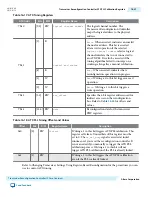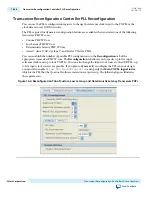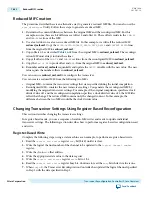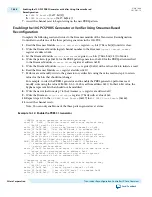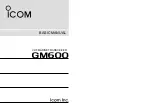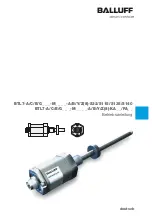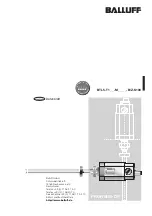
MIF Generation
The MIF stores the configuration data for the transceiver PHY IP cores. The Quartus II software
automatically generates MIFs after each successful compilation.
MIFs are stored in the reconfig_mif folder of the project's working directory. This folder stores all MIFs
associated with the compiled project for each transceiver PHY IP core instance in the design. The
parameter settings of PHY IP core instance reflect the currently specified MIF. You can store the MIF in
an on-chip ROM or any other type of memory. This memory must connect to the MIF reconfiguration
management interface.
The following example shows file names for the .mif files for a design with two channels. This design
example includes two transceiver PHY IP core instances running at different data rates. Both transceiver
PHY IP core instances have two TX PLLs specified to support both 1 Gbps and 2.5 Gbps data rates. The
Quartus II software generates two TX PLL .mif files for each PLL. The difference between the .mif files is
the PLL reference clock specified. To dynamically reconfigure the channel from the initially specified data
rate to a new data rate, you can use the MIF streaming function to load the other .mif.
Note: When reconfiguration is limited to a few settings, you can create a partial .mif that only includes
the settings that must be updated. Refer to Reduced MIF Creation for more information about
creating a partial .mif file.
Example 16-4: Quartus II Generated MIF Files
<project_dir>/
reconfig_mif/inst0_1g_channel.mif
<project_dir>/
reconfig_mif/inst0_1g_txpll0.mif
<project_dir>/
reconfig_mif/inst0_1g_txpll1.mif
<project_dir>/
reconfig_mif/inst0_2p5g_channel.mif
<project_dir>/
reconfig_mif/inst0_2p5g_txpll0.mif
<project_dir>/
reconfig_mif/inst0_2p5g_txpll1.mif
Creating MIFs for Designs that Include Bonded or GT Channels
You can generate MIF files for projects that include bonded or GT channels using the following
procedure:
1. Create separate 1-channel designs for each frequency TX PLL frequency that your actual design
requires.
2. Compile each design with the Quartus II software.
3. Save the MIF files that Quartus II software generates.
4. Use the MIF files that you have created from your 1-channel designs for reconfiguration in your design
that includes bonded clocks.
UG-01080
2015.01.19
MIF Generation
16-37
Transceiver Reconfiguration Controller IP Core Overview
Altera Corporation
Send Feedback





